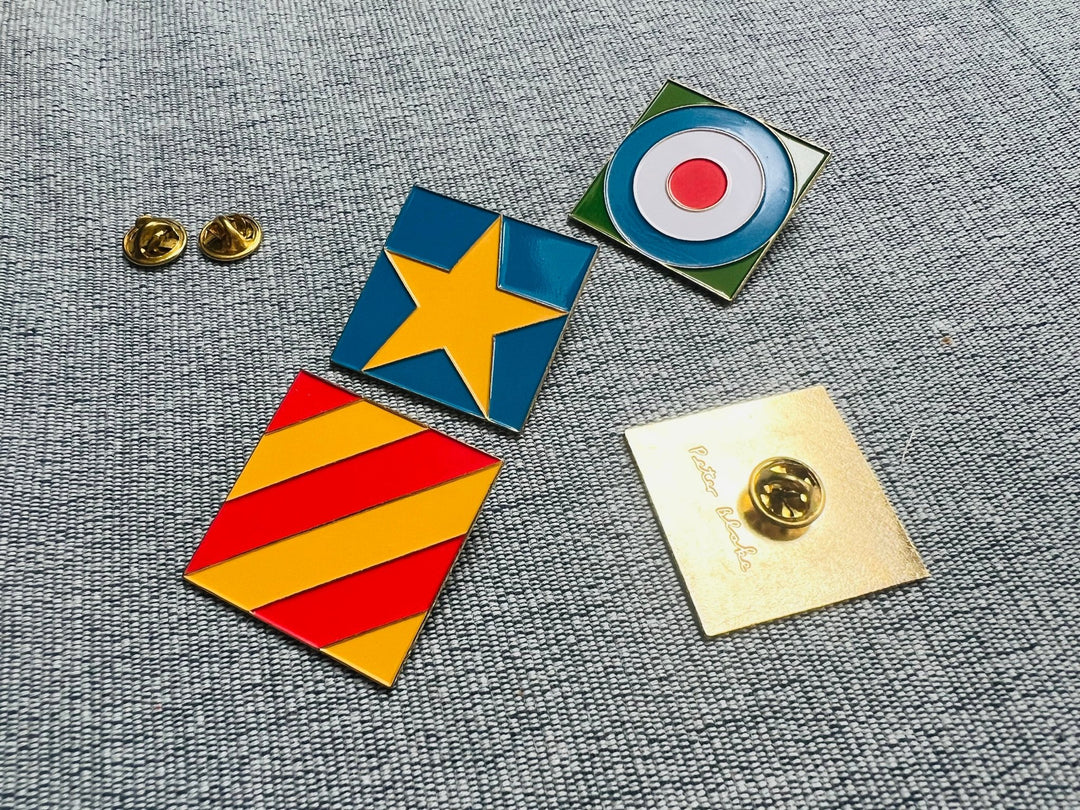Before he’d finished his first year studying illustration in Brighton, Christopher Wright (better known as Tinhead) had already found more fame than many of his tutors, crashing into the consciousness of a generation of edgy teens and twenty somethings with his work for math rock outfit Foals.
Foals found instant success with their angular, aggressive guitar music and slavish dedication to playing house parties up and down the country, and Tinhead went along for the ride. Before all that though, he’d been a racing driver and sometime dustbin man, so the limelight should have taken him by surprise. Not a bit of it though, from fobbing off record labels to drinking through deadlines, Tinhead seems to have taken it all in his stride.
December 2016
The album cover artist on Foals, the benefit of collaboration, and the human condition.

How did you get to meet Foals?
Tinhead: I did my A-levels and then went to Oxford Brookes for Art Foundation, and Jack, the drummer in Foals, was there too. I met Yannis a couple of times through Jack, when they used to be in a band called The Edmund Fitzgerald. They had to go to this gig and I was one of the only people that could drive—I’m pretty sure that Jack and Yannis still can't drive. I had a big 405 Peugeot estate I bought for about 300 quid, and we just smoked up to London in that for their gig. At the time I was working as a bin man.
A while later Yannis came to my final show, and he was like, "Oh, I just thought you were a bit of an idiot, but your artwork is quite good."
"Oh, thanks."
When did they stop being The Edmund Fitzgerald and become Foals?
T: One day Yannis said, "We're going to start a new band. We're going to write pop songs and we're going to become famous, and you're going to do the artwork and your art will become famous." I kind of believed him because he's a pretty unique character. If you met him you’d understand.
You actually bought into what he was saying?
T: Yeah, I believed him, because he's pretty clever—kind of an evil genius. But he definitely got the best out of me with my artwork, and with getting me to bend over backwards for him. I don't know what other people were like, but I produced the best work I ever did with them.
What else were you doing when you were making work for Foals?
T: I didn't get into uni first time, so when he asked me to do artwork I was literally a fucking dustbin man—not that there’s anything wrong with that. Then one day I’m going to a meeting with Warners and Transgressive Records in London. Yannis had just f*****g made this happen with his band. A lot of that was just his drive, I think.
Did you start by doing the singles for Balloons and Hummer?
T: There must have been some before then, but I think those were some of the first ones. I once did them a drawing of a horse, and Yannis was like, "No, I don't want any imagery to do with horses." Which was fair enough, although later on I think one of their albums did have horses on the front cover, so figure that one out! I was doing more singles for them when I was in first year at uni, then we did a deal to do more singles and the album with Warner Brothers.
“I created all of that for the band—that particular look for that particular type of music that was happening at the time.”

What was it like making Antidotes, given you didn’t have much experience?
T: The album was quite stressful because I didn't know what to do. Yannis had a few ideas—this one about a couple of people with things in their mouths—but I didn’t have a clue. I didn’t do anything for ages and the record company were like, "Come on, you've got to do it, you've gone past the deadline." I kept on telling them it was nearly done, until one day they rang up and said, “Be honest, you haven't done anything, have you?”
“No.”
Anyway, there was a nice lady who worked there called Charlotte, who said they were telling her to get on a train and come to Brighton and sit me at a desk and force me to do it. I told her not to worry, that I was going to get it done, but I still had no idea what to do. I had quite a lot to drink, and then I woke up in the morning and it was done—and from what I could see looked quite good. I sent it to them and they were like, “Everyone loves this. Brilliant. We can't believe it. There’s people crying.” I think I’d stressed them out pretty bad. And that was Antidotes!
The artwork originally featured two people, right?
T: Yeah, and then we tweaked it because Yannis wanted one person. He though it would be more iconic. The problem was, I thought, that if we had one person it would just look like a Phil Collins cover or something. It's just a picture of a head. We had an argument, but in the end, obviously, he got his way. And I think he was probably right, it probably did look better.
So then Foals blew up, and everyone knew who you were. Was it tricky to be associated with a famous band so early in your career?
T: Yeah, that definitely was a problem. It pigeonholed me and people would just want things that looked the same. They would literally come to me and say, "I want it to look like a Foals thing." I’d tell them to f**k off. I created all of that for the band—that particular look for that particular type of music that was happening at the time. Math rock. The music's different now though, so an early Tinhead-style drawing wouldn’t work for them anymore.
The other thing that people would say early on was that I was just an album cover guy. But that was the only project I’d ever been given. It just depends what you get involved with; some people do advertising, I did a lot of stuff with music.
You did a lot of stuff with other artists in Oxford too, didn’t you? There was a collective for a while called Blessing Force…
T: Yeah, Oxford at that point was going through a pretty creative time, and everybody was involved. There was a big friendship group. It wasn't just Foals and Totally Enormous Extinct Dinosaurs, there was people everywhere—Jonquil, Chad Valley, Youthmovies, all these other bands too. There were people we knew that had studios and did screen printing. Andrew Mears from Youthmovies was doing screen printing above the pub he ran, so we'd all get drunk in the pub and go and print upstairs. We even had a show at Modern Art Oxford. At the time, you take it for granted, but it was actually a breeding ground for creativity that flowed straight on from when I left uni. It was really great.
How do you feel about Antidotes ten years on?
T: It's simple isn't it? But I'm really pleased and proud of it in all seriousness. It was a good thing at the time, you know. When I was at uni, I didn't give a shit, and everyone would say, "Your stuff is all over the world in HMV and on this bus shelter. It's everywhere. I was in Ireland, and I saw it there. I went to Japan, it was there.” I didn’t really care. I was more interested in just having a party or going out racing.
It is odd though, because of the success of the band. Without that, I don't think any of this would have happened. In a way it gave me an identity as an artist. I just think you’ve got to take art with a pinch of salt—although I had to get really drunk to draw a picture of a man with loads of pills in his mouth, so what does that explain about the human condition?






